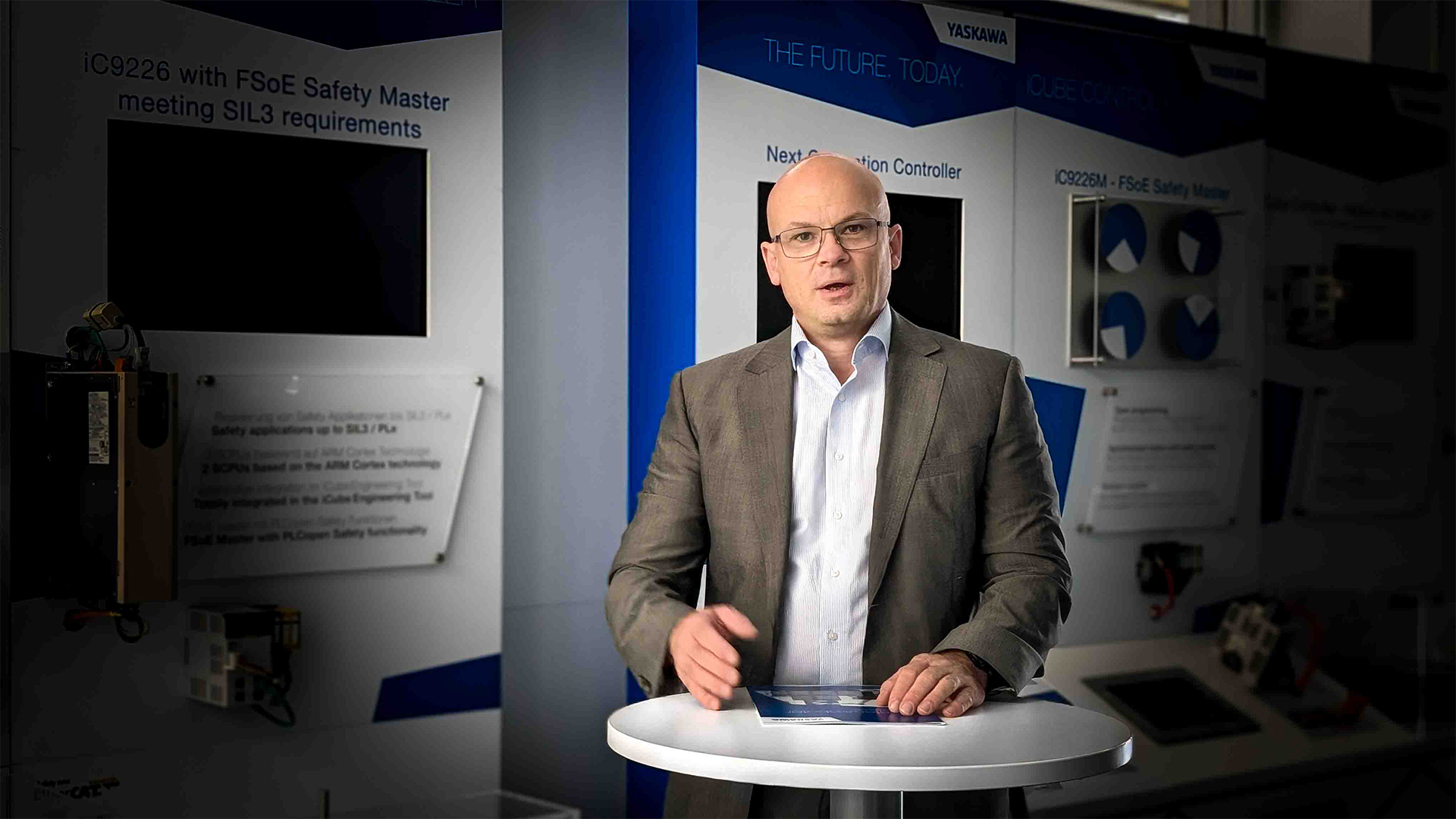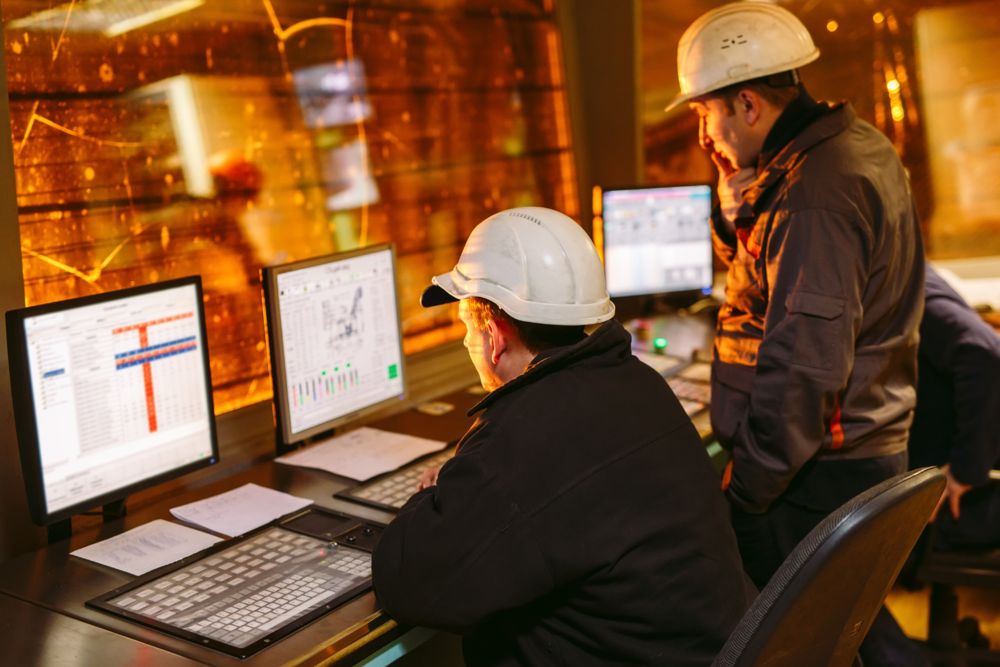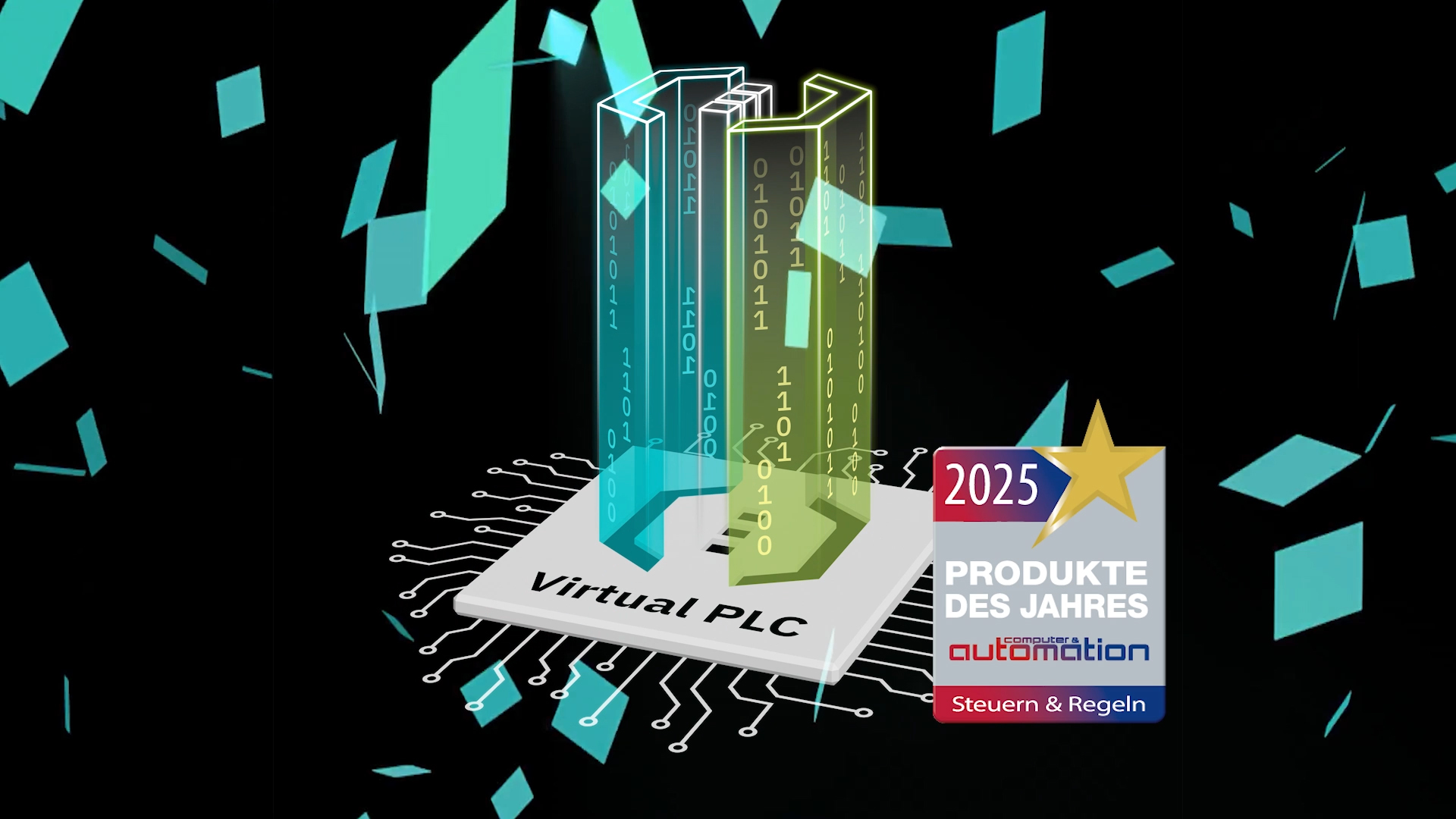
Welcome to our exclusive interview with Tobias Unger. He is the General Manager of the European Technology Center at Yaskawa Europe GmbH, specifically within the Drives Motion Controls Division, about innovative synergies between Yaskawa & PLCnext Technology. Unger plays a pivotal role in overseeing technological advancements and strategic initiatives to drive innovation and efficiency in motion control solutions across Europe.
In this discussion, we explore the innovative collaboration between Yaskawa and PLCnext Technology, a partnership that is driving significant advancements in the field of motion control and industrial automation. Under Tobias Unger’s leadership, Yaskawa’s Drives Motion Controls Division is leveraging the open and flexible PLCnext Technology ecosystem to enhance the capabilities and performance of their solutions.
Join us as Unger shares his insights on how the synergy between Yaskawa and PLCnext Technology is enabling new levels of efficiency, precision, and connectivity. This interview offers a unique perspective on the collaborative efforts that are pushing the boundaries of what is possible in industrial automation.
So, sit back, relax, and enjoy this engaging discussion with Tobias Unger as we uncover the exciting developments and visionary strategies that are driving Yaskawa Europe GmbH and PLCnext Technology towards a more innovative and sustainable future.
The Evolution of Partnerships in Industrial Automation
Intro: Mr. Unger, thank you for sitting down with us.
Unger: Thank you for having me.
Q1: Let’s get straight into it: Partnerships in industrial automation have evolved significantly. Can you give us your perspective on this?
Unger: Today, entering into partnerships is often no longer an option, but a necessity. The automation industry has changed significantly in recent years. This applies, on the one hand, to the type and number of technologies required as well as to their development cycles. The drivers are of course the merger of OT, IT and AI solutions. The complexity of modern technology presents a significant challenge for many companies, making it difficult for them to cope alone. There is also increased global competition and cost pressure. Entering into strategic partnerships, and thus relying on openness, is therefore a smart move.
Intermediate Q: How do normative regulations impact partnerships in the industry?
Unger: Another aspect is normative regulations that increasingly force cooperation, for example the Cyber Resilience Act. Such partnerships are not limited to technologies, but crucial to offering solutions with the involvement of the end user. This means that partnerships exist both horizontally (e.g. technology collaborations) and vertically (e.g. concrete solutions for OEMs and end users). In the end, it’s about combining the strengths and offering the best solution to the respective user.
Innovating Together: Yaskawa’s Strategic Partnership with PLCnext Technology
Q2: Yaskawa and PLCnext Technology have jointly announced a strategic partnership. This collaboration aims to harness the innovative capabilities of both companies and elevate industrial automation to new heights. Could you share more about the driving factors behind this decision?
“[…], it was important to us to have full access to the source code in order to optimally integrate our core functions for motion and robotic applications. PLCnext Technology is predestined for this.”
Unger: For a new control generation called ‘iCube Control’, we thought about scenarios for creating a unified controller platform that offers the greatest possible flexibility and future-proofing. At the same time, it was important to us to have full access to the source code in order to optimally integrate our core functions for motion and robotic applications. PLCnext Technology is predestined for this. Phoenix Contact and Yaskawa are jointly developing PLCnext Technology further and we can also independently integrate our core know-how into our own PLCnext Technology-based control platform. This is an important component of our ‘i³-Mechatronics solution concept. Another important aspect of the make, buy or collaborate decision was of course time to market and the idea of an ecosystem and the PLCnext Community. The collaboration is a true technology partnership.
Customer Benefits and introducing i³ Control
Q3: PLCnext Technology is based on an open architecture, allowing for customized solutions and seamless integration of existing systems. How do you see this openness and flexibility enhancing
customer experiences?
“On the one hand, the integration of existing systems offers a significant advantage in terms of investment security and costs. In addition, optimized and tailored solutions are possible that secure our own know-how, and thus offer competitive advantages for the customer.”
Unger: There are several advantages here. On the one hand, the integration of existing systems offers a significant advantage in terms of investment security and costs. In addition, optimized and tailored solutions are possible that secure our own know-how, and thus offer competitive advantages for the customer. The innovation advantage should not be underestimated either. Open architectures enable the flexible use of a broad base of functions from different sources. This means that many new features are available comparatively quickly and can be combined depending on individual requirements.
Q4: With i³ Control, Yaskawa has announced a completely new automation system based on PLCnext Technology, that extends from the engineering environment to the control and drive hardware to the app store. Can you tell us more about it?
Unger: The Yaskawa ‘iCube Control’ automation platform forms a technically coordinated overall solution for industry-specific control systems – from the engineering software to the controller hardware to the integrated chip technology.
Intermediate Q: How will ‘iCube Control’ evolve over time?
Designed as a modern motion concept, ‘iCube Control’ will gradually be expanded into a comprehensive system for motion control and automation. The goal is to provide a consistent platform that allows machine manufacturers to access all functions—ranging from controlling variable frequency drives to motion control and safety, as well as programming and controlling robots—within the same environment. The ‘iCube Engineer’ software opens up the entire ecosystem, which is characterized by openness, flexibility and scalability based on a Linux operating system. Supplemented by numerous apps and function libraries, ‘iCube Control’ together with our Sigma-X servo drives forms a high-performance motion system.
Collaborative Innovation
Q5: With regard to the partnership – can you give us an insight into how the collaboration works?
“From the very beginning, it was a real technology partnership. We all committed to joint development and continuous improvement of PLCnext Technology.”
Unger: From the very beginning, it was a real technology partnership. We all committed to joint development and continuous improvement of PLCnext Technology. We defined roadmaps that satisfied needs of both partners considering special requirements of different markets. For the daily work, we established joint workings groups to develop all relevant topics and share our knowledge, i.e. safety, hardware, engineering tool. We synchronized our development processes (i.e security) and got access to the tools. The key success factor of such approaches is an open, transparent, and trustful communication.
What happens next? How Yaskawa and PLCnext Technology are Shaping the Future
Q6: Looking towards the future – what are the plans for the upcoming time regarding the collaboration?
Unger: We will continue and expand our cooperation in order to evolve PLCnext Technology. In addition to newly developed and continuously improved products, the focus is on overall solutions. And this means that the PLCnext Community idea is particularly important.
Outro
As we conclude this insightful conversation with Tobias Unger, it’s clear that the collaboration between Yaskawa and PLCnext Technology is not just a strategic partnership but a visionary alliance driving the future of industrial automation. The innovative strides and shared commitment to openness and flexibility are setting new benchmarks in the industry.
We hope you enjoyed this deep dive into the technological advancements and strategic initiatives that are shaping the future of motion control and industrial automation. Stay tuned for more exciting updates and developments from Yaskawa and PLCnext Technology as they continue to push the boundaries of what’s possible.
Special thanks to Tobias Unger and Yaskawa and thanks to you for joining us, and until next time, keep innovating and embracing the future of automation.
You are welcome to read more about Yaskawa on our PLCnext Community Website or on Yaskawa’s website.




